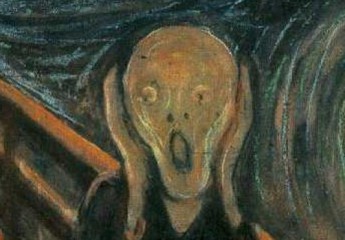Friends and family ask me to describe Kigali and life in my new home city. It’s a huge responsibility to be the one who conveys a message and creates an image of a country that’s vastly defined by its tragic history. So, on Thursday, Toff and I took the day off work and decided to seize the day.
Before we concluded on the spots we wanted to check out in Kigali, we asked ourselves what do we want from our everyday lives here. Wherever we go, the answer is more or less the same: a living room outside our home, engagement with the arts scene, and a bond with the community.
Kigali Public Library

With Toff’s (kind of) flexible hours and my freelance job, we have the option to work from different spaces to break the routine and get the benefits from a change of scenery. The Kigali Public Library in Kacyiru is between home and Kigali Heights, where ALU is. This is the first public library in Rwanda, and its opening in 2012 was about the promotion of reading culture among the population and a reminder that lack of access to accurate information can lead to tragic events such as the 1994 genocide against the Tutsi.
The outdoor space is a park in the city; an excellent spot for setting up a picnic and marvelling at the hilly views of Kigali. Kids were running around with brushes and canvases, taking part in an art class. The dark furniture colours inside the library and the organisation of desks and chairs reminded me a lot of dull Greek classrooms, but the selection of books is an excellent introduction to African literature for someone as clueless as I am. For a start, I borrowed three books: Letter to My Daughter by Maya Angelou, We Are the Ones We Have Been Waiting For by Alice Walker, and Breath on the Mirror by Dennis Tedlock.

We were slightly disappointed that the library wouldn’t become the space we were looking for — until we reached at the rooftop. Shokola Café is an open multipurpose space, with cosy corners for reading and working, meeting rooms, gallery walls, and some delicious Mediterranean flavours that made me smile.
Bonus: The service was out of this world — a balanced approach of professionalism and friendliness.
Inema Arts Center

Toff and I are mini art collectors with original works in our collection coming from South Korean, Ghanaian, Canadian, Brazilian, and Japanese artists. Iotoff‘s art is travelling with us at all times and is always the first item to be unpacked in our new home. We believe that art isn’t about making spaces prettier; is about creating spaces that encourage forward thinking and motion outside our comfort zone.
To get this feeling of brain tickles, we walked (up and down the hilly roads) for about half an hour from the library to Inema Arts Center. We entered into a garden with art installations and graffiti on the walls, and we knew the heart of Kigali’s art scene is beating here. The docent welcomed us explaining the arrangement of the artwork, and we even had a quick chat with one of the two founders, painter Innocent Nkurunziza.
Several artworks, which we cannot afford at this stage, attracted us. It’s difficult to think about art when we haven’t got our bed, fridge, and Mars’ arrival sorted out yet. But we can keep coming back to Inema Arts Center to admire the work of the resident painters and sculptures, the artisan women, the dancers, and the musicians. Here, your presence encourages creative people to use their creativity for a productive livelihood.
Bonus: On Thursdays, they have get-togethers from 6 to 9 pm with music performances, beers, and lively chats at the bar.
Kimironko Market
Markets don’t need much explanation. From Port Louis to Istanbul and from Athens to Haenam, markets share some common elements: colourful products, hand gestures, convincing language, and creative presentation of products. I knew that in the market the notion of personal space is non-existent and that there would be a lot of staring at the umuzungu (the light-skin foreigner).
You don’t put yourself in this environment unless you are patient, like haggling, and have an eye for detail. You must be ready to squeeze through narrow alleys, crammed with houseware, handicrafts, and fabrics while being stopped by every single vendor who is keen on selling you something good; something you didn’t know you needed.
Young ladies followed me around for several metres with the web browser on their phone open to fashion designs. “I can make you a beautiful dress for RWF 15,000 (about 15 euros), including fabric”, one lady said. When she saw that I wasn’t impressed by the offer, she added: “In less than an hour.”
Downside: I couldn’t keep calm when passing by the butcher. The smell and sight of blood and the sound of butchering half-dead or half-alive animals is turning my stomach.

